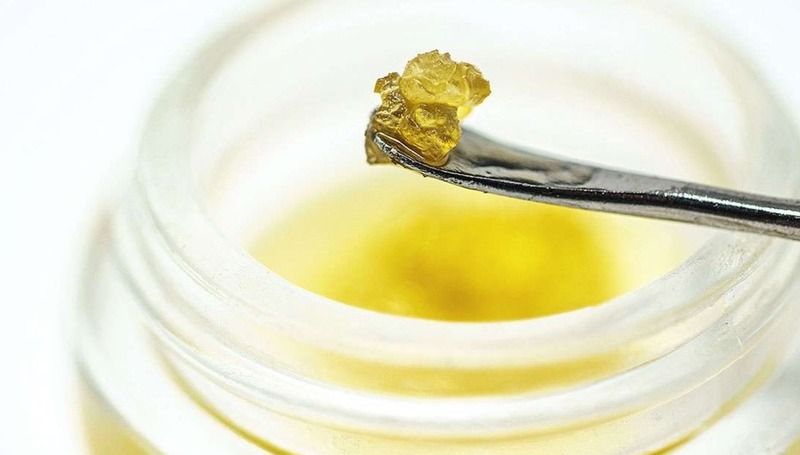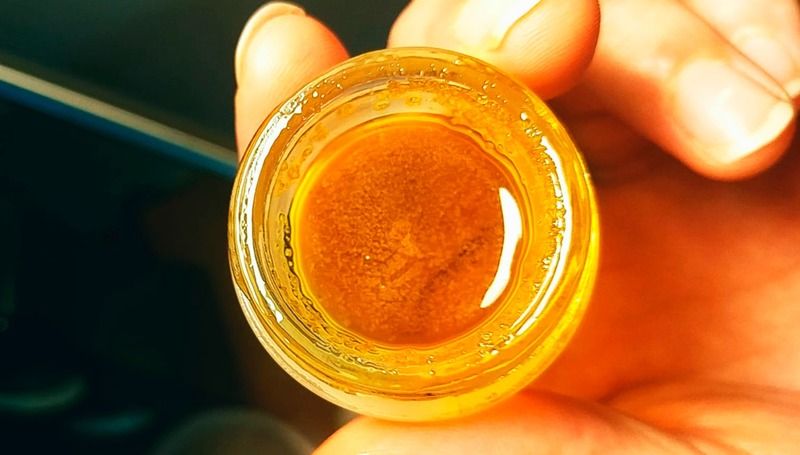Cannabis concentrate enthusiasts are scouring the planet looking for uncrowded, pure, and flavorful extracts. Premium concentrates contain a greater proportion of cannabinoids than fresh or cured marijuana flower buds, whether it’s shatter, wax, live resin, or crumble. Unfortunately, most solvent and solventless extraction processes use high temperatures and pressures that can harm much of the strain’s original flavor and smell. Looking to try something new? Check out this.

However, in recent years, a new and especially fragrant cannabis concentrate has gained in popularity among those that appreciate cannabis’ distinctive aromatic terpenes as well as THC and CBD. Terp sauce is a high-terpene full-spectrum extract (HTFSE) that may take your dabbing experience to a new level.
What Is Terp Sauce?
Terp sauce is a unique concentrate with a high concentration of diamond-like THCA crystals and syrupy terpenes that stands out. Among the hard shatter and wax, it’s difficult to overlook this gritty textured liquid. Terp or cannabis sauce includes small chunks of crystal or “diamonds” clusters within a puddle of terpene-rich sauce. In essence, the making process for terp sauce allows the cannabinoids and terpenes to be separated in the final product.
Terp sauce isn’t live resin or even nucleated shatter, as many people believe. Live resin may have a higher-than-average amount of terpenes, but because it contains no crystallized structures like cannabis sauce does, its levels are not nearly as high.
The solid and liquid components of the sauce begin to separate over time, resulting in nucleated shatter. This is a rather strange way of separating terpenes and cannabinoids that isn’t comparable to terp sauce produced by legal extractors.
How is Terp Sauce Made?
Terp sauce is produced by extracting terpenes from cannabis plants using a variety of techniques. Terpenes can also be extracted from the plant, just like cannabinoids (THC, CBD, etc.). Solvents such as butane, hydrocarbons, or CO2 may be used to extract them. Terpenes are removed from the cannabinoids after being combined with solvents to create an aromatic liquid concentrate. This terpene-rich extract can then be mixed with cannabinoids in a variety of forms.
Difference Between Terp Sauce and Live Resin
Terp sauce and live resin extracts can be difficult to distinguish because they are both high-thc, full-spectrum extracts that may include a lot of cannabinoids and terpenes. Because the source plant is frozen at subcritical temperatures before extraction rather than first being dried and cured, live resin has a waxy texture.
Live resin, on the other hand, is typically high in terpenes. The chemical composition of live resin is generally focused in cannabinoids such as THC. Terp sauce, on the other hand, is a terpene extract that may be mixed with other cannabinoid-rich concentrates like isolate or distillate. Terpenes and cannabinoids are both popular among terpene aficionados, so it all comes down to your preferences for particular terpenes and cannabinoids at certain ratios/concentrations.
Solvent-Based Extraction
Terp sauce, like many other common concentrates sorts such as shatter and wax, is produced utilizing a closed-loop extraction technique that removes the entire spectrum of chemical compounds from the cannabis plant’s harsh-tasting chlorophyll, lipids, and waxes.
Manufacturers generally start with fresh frozen cannabis buds rather than trim, shake, or other low-cannabinoid product. Frozen cannabis buds maintain the plant’s peak trichome levels, resulting in a higher level of cannabinoids and terpenes in the finished product.
Although there are many variations, the most frequent terp sauce extraction processes use hydrocarbons such as propane and butane, or a combination of both. The low boiling points of propane and butane allow them to retain, not degrade, the temperature-sensitive terpenes in the oil.
The closed-loop extraction process generates a cannabis oil that must be post-processed to remove residual solvents and form crystal diamonds and terp liquid. Extraction experts use a low-temperature purge to evaporate the trapped solvent from the resin during the making of terp sauce.
After the proper amount of solvent has been removed, extraction operators add their terp sauce solution to an airtight mason jar and set it in a cool, dry, and dark location for a few weeks or longer for it to undergo a natural separation process. Large diamonds and runny terp syrup are produced on a regular basis by careful monitoring.
How To Smoke Terp Sauce
Terp sauce extracts may be taken in a variety of ways, but dabbing is the most popular. However, using a hand-held or tabletop vaporizer is also widespread. Alternatively, you can use a nectar collector to quickly and efficiently take a dab.
Dabbing
Dabbing terp sauce has quickly become the preferred method of consuming cannabis concentrates, and it’s a delicious experience. You just need a dag glass or silicone dab rig, which can be found at most smoke shops. Bangers are composed of either glass, quartz, ceramic, or titanium and resemble water pipes or bongs.
A torch is used to heat the banger. Some individuals like a bigger butane torch for use on a tiny camping grill, while others like hand torches. It’s up to you. An e-nail, on the other hand, gives you the most chance of getting a smooth hit since you can control the temperature. Perfect for taking your terps in style!
Once you’ve reached the desired temperature (usually between 500 and 700 degrees Fahrenheit), place a tiny amount of terp sauce on the banger or e-nail, then take a puff.
You should experiment with the rig to discover how big a terp sauce dab you’ll need and the ideal temperature for activating the flavorful cannabinoids and terpenes produced by these cannabis extracts’ extraction processes.
When dabbing, begin with a small amount of concentrate and gradually increase the size of your dabs until you achieve a pleasurable hit. Also, experiment with the temperature settings until you get a nice draw. When collecting your dab tool, try to gather THCA crystals as well as some of the sauce.
